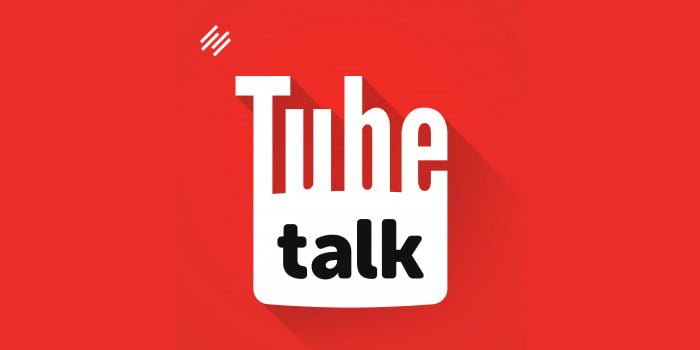Last updated on June 14th, 2024
In this week’s TubeTalk podcast, we discuss the best way to promote your video on YouTube using paid media, or the TrueView advertising model, what keeping your YouTube account in good standing means, and how to use those new YouTube three-second branding introductions.
HOSTS:
- Dane Golden: VidAction.tv | LinkedIn
- Tim Schmoyer: VideoCreators | Twitter
- Jeremy Vest: VidPow | Facebook
This Week’s TubeTalk YouTube Marketing Tips:
Tip #1: Best Practices for Promoting YouTube Videos w/ Paid Media
Tim Schmoyer talked about YouTube recommendations for the TrueView ad format, which offers thre different types of ad placements.
- TrueView In-Stream: gives viewers the option to skip the ad after 5 seconds. That way any views the ad gets are from people who are actually interested in watching it. What’s more is that you don’t actually pay for the view until they’ve watch 30 seconds of your video or the full duration if the ad is shorter than 30 seconds.
- TrueView In-Display: These ads appear as a thumbnail and text on YouTube watch pages in the right-hand pane of suggested and recommended videos. They also appear on the Google Display Network on websites off of YouTube. You pay when someone clicks on the ad and begins watching your video.
- TrueView In-Search: These ads appear in a special promoted section of the video search results pages on YouTube and in Google Video search results. Again, you pay when a view chooses to watch your video.
Tim said that YouTube recommends different formats for different types each type of promotion:
- Evergreen content (Hygiene): In-Search Ads
- Regularly scheduled content (Hub): In-Stream Ads
- Your big events (Hero): Reservation-based Ads
Tip #2: What Does Keep Your Account In Good Standing Really Mean?
Dane Golden talked about a post from last Fall written by ReelSEO managing editor Carla Marshall about keeping your YouTube account in good standing. This info continues to be applicable today, because at its heart, YouTube is a community, and communities have rules. You want to be a good member of the community, an important part of which is being a member “in good standing.”
Being in good standing gets you a number of privileges, including monetization, which is quite important to many of the people who end up running afoul of the rules. If an account breaks the rules in certain ways, they can get strikes against them, which may add up to loss of features, suspension, termination, or even legal action.
The three kinds of violations are Community Strikes, Copyright Strikes, and ContentID Matches.
- Community Guideline Strikes happen when users flag a video as inappropriate because they feel it’s either racist, sexually explicit, abusive, offensive or spammy. For a first strike you get a warning, a second strike in two weeks gets you banned from uploading, and a third strike gets your channel terminated.
- Copyright Strikes/DMCA Takedown Notices, are manually-created copyright claims. With a first strike you get a warning and some features disabled. After three strikes, your account is suspended, all your videos are removed, and you can’t create a new YouTube account.
- ContentID Matches get the most press, particularly last December when gamers suddenly started receiving many takedown notices. These are automated and can have false positives as video and audio rights can be shared by multiple parties. But YouTube says they think they have a better system now that will create less acrimony.
- ContentID matches don’t necessarily result in strikes. Copyright owners have the option of either blocking or muting the video, monetizing it themselves, or just tracking the analytics.
Tip #3: How To Use YouTube’s New 3-Second Branding Introductions
Jeremy Vest wrote an article last week for ReelSEO on YouTube’s new three-second branding introductions. Branding intros are a new YouTube InVideo Programming feature that allow you to display a three second or less intro in front of your videos. Jeremy said he’s found that people decided if they are going to watch your YouTube video in the first three-to-six seconds. So creating a three-second standard intro could be risky. If you’re going to use this feature, make sure you test your view duration with and without branding intros turned on.
This option can now be found as the third setting in YouTube Channel Settings -> InVideo Programming. Jeremy recommends keeping this short video unlisted so it doesn’t confuse your viewers.

